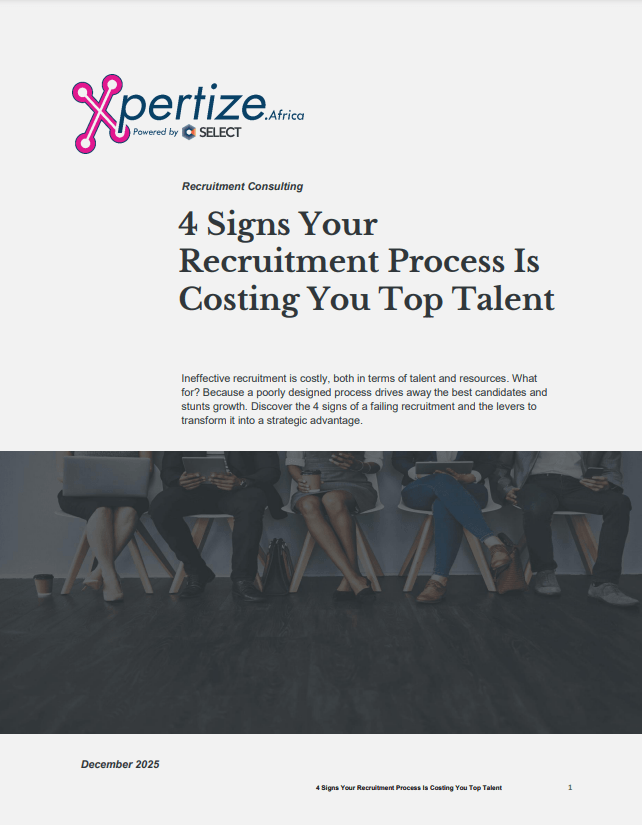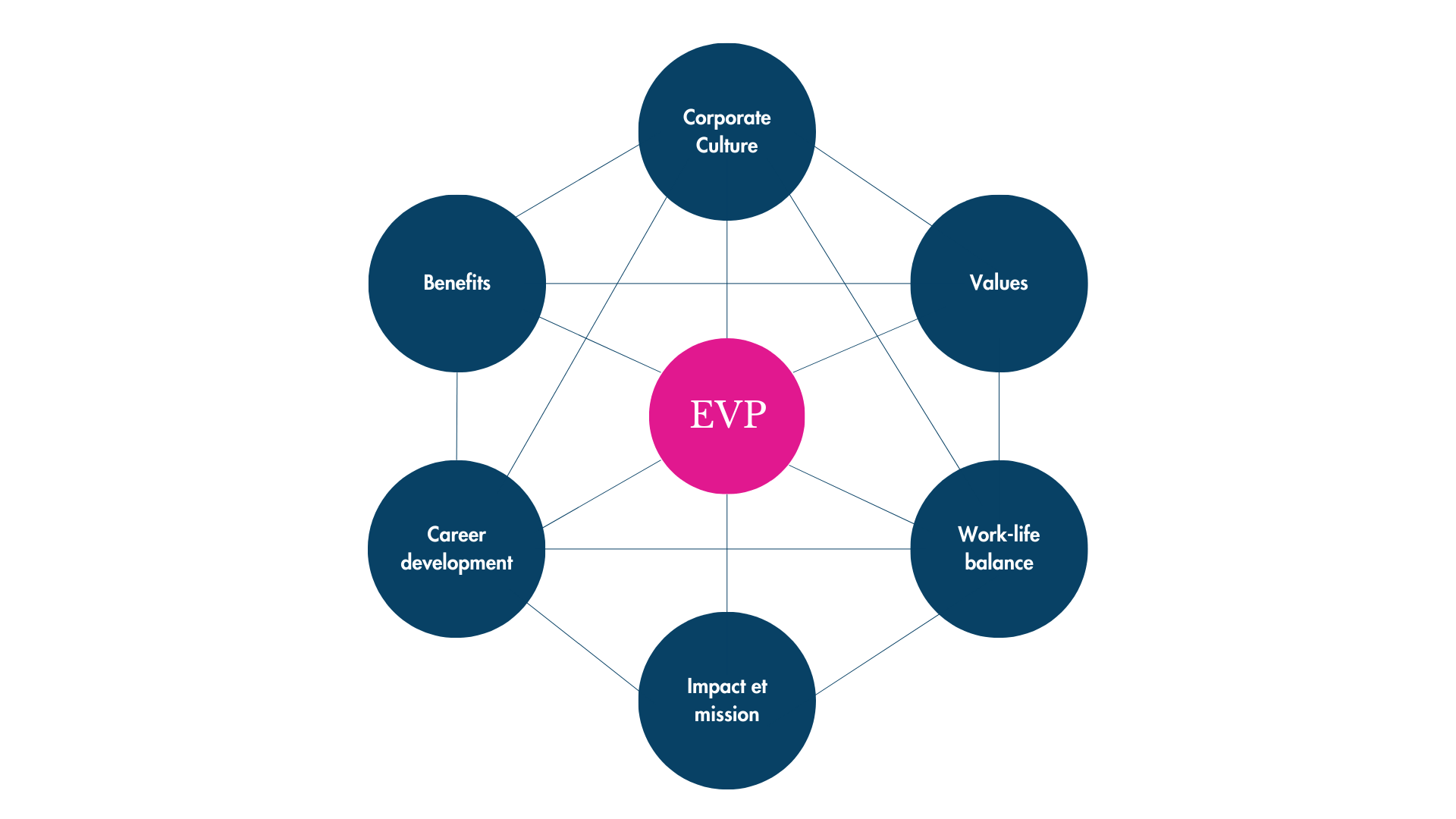4 signs that your recruitment process is costing you the best talent
Ineffective recruitment is expensive, both in terms of talent and resources. Why? Because a poorly designed process keeps out the best candidates and holds back growth. Discover the 4 signs of poor recruitment and how to turn it into a strategic advantage.
4 signs that your recruitment process is costing you the best talent

Download the report
In an increasingly competitive employment market, attracting and retaining the best talent has become an essential strategic lever for boosting business performance and growth. However, a poorly optimised recruitment process can compromise these ambitions, discouraging the most qualified profiles. Frequent pitfalls, such as long lead times or insufficient candidate experience, can result in significant costs, both financial and strategic.
Here are 4 key indicators of a poor recruitment process, along with concrete recommendations for improving its efficiency and boosting your attractiveness to top talent.
1. Recruitment processes that are too long
Every day lost in a protracted process increases the risk that the most qualified candidates, who are often approached by other companies, will lose patience and accept competing offers. This situation is all the more worrying because it is not limited to operational inefficiency: excessive slowness is often perceived by candidates as a sign of internal disorganisation, which has a direct impact on the employer brand image. In the long term, this reduces the company's ability to position itself as an employer of choice, particularly in the eyes of sought-after profiles, who prefer companies capable of taking quick and efficient decisions.
A costly slowness for the company
The impact of extended deadlines is not limited to the loss of candidates. There are also significant hidden costs:
- Increased operational costs: prolonged processes mobilise internal resources, such as recruiters or managers, over a longer period, reducing their availability for other strategic priorities.
- Compromised productivity: unfilled vacancies impact on the company's ability to meet operational objectives and maintain an optimal level of service.
- Degraded candidate experience: Delays in feedback or lack of visibility on next steps can frustrate candidates, reinforcing a feeling of uncertainty and disinterest.
Accelerating without compromising quality: the challenge of agility
To meet these challenges, companies need to rethink their recruitment processes by adopting practices that promote agility and efficiency, while preserving the quality of assessment. Here are three key levers for achieving this:
1. Automate repetitive tasks
New technologies, such as artificial intelligence tools and application management systems (ATS), enable repetitive steps such as the initial sorting of CVs or the sending of automatic replies to be processed quickly. This reduces administrative delays while freeing up time for human interaction, where it adds the most value.
2. Streamlining process steps
Companies can increase efficiency by bringing assessors together for group interviews or by organising multi-dimensional assessment sessions. This reduces the number of interview rounds required, while guaranteeing a thorough and diversified assessment.
3. Set clear, measurable deadlines
Defining precise deadlines for each stage of the process - and sticking to them - increases transparency and confidence among candidates. A well-communicated timetable gives an impression of control and reassures talent about the seriousness of the company. For example, a promise to return within five days of an interview can greatly enhance the overall candidate experience, while differentiating the company from its competitors.
2. An inconsistent candidate experience
The candidate experience is more than just a selection process: it is a direct reflection of your company's image and values. Indeed, in a competitive labour market, a poorly designed recruitment process can damage your employer brand far beyond the boundaries of the process itself. When candidates encounter unnecessary obstacles or find themselves in a situation of prolonged silence, they can quickly turn away from the company, imagining that these signs of inattention and disorganisation are a reflection of the organisation's internal culture. Without a fluid and engaging experience, potential talent can lose confidence and move on to more attractive and responsive opportunities.
Signs of an unsatisfactory candidate experience
- Lack of follow-up after the initial stages: If a candidate does not receive any feedback after submitting their application or after an interview, they can quickly imagine that they are no longer being considered, creating an impression of neglect.
- Complex application portals to navigate: An application form that is difficult to fill in or a website that is not user-friendly can put off even the most qualified candidates. The submission process should be intuitive and simplified, without unnecessary barriers.
- Impersonal or inappropriate communication: A generic, automated response or a lack of personalised communication can give the impression that the candidate is just another number in a pile of CVs, which can damage the relationship of trust with the company.
How to optimise the candidate experience
Improving the candidate experience requires a structured approach, focused on making the recruitment process smooth, transparent and humane. This involves a series of concrete initiatives designed to reduce friction and establish a climate of trust with candidates.
1. Simplify and test the ergonomics of your application form
Simplicity is key. A well-designed, easy-to-complete application form can significantly improve candidate engagement from the outset. It is essential to regularly test the usability of the process to ensure that it is accessible and intuitive. A well thought-out interface helps to reinforce the candidate's positive first impression of the company.
2. Offer regular updates, even in the absence of new advances
Transparency is key to maintaining a relationship of trust with candidates. Even if the recruitment process takes a long time or if no new progress is available, keeping candidates informed about the status of their application is essential. Regular messages, however brief, help to reassure and maintain the interest of talent throughout the process.
3. Gather feedback at every stage of the process
Soliciting feedback from candidates at every stage of the recruitment process is an effective way of identifying sticking points and continually adjusting the process. A quick satisfaction questionnaire after an interview, or even at the end of the entire recruitment process, provides valuable information for improving the experience in the future.
4. Humanising communication
Far from simple automated exchanges, it is important to maintain authentic and personalised communication. This involves messages written specifically for each candidate, using their name and referring to details of their background and their dealings with the company. A more human approach creates a stronger, more respectful relationship.
5. Ensuring responsiveness at every stage
The response time at each stage of the recruitment process is crucial. Excessive delays between the various stages can be interpreted as a lack of interest. By optimising the responsiveness of recruiters, you show candidates that you respect their time and investment in the process. This reinforces the perception of the company as professional and organised.
53% of candidates have a negative experience during a recruitment process, which led to 72% of them sharing their frustrations with others.
3. An ill-defined employer value proposition
In a competitive job market, a clear Employer Value Proposition (EVP) that is authentic and aligned with candidates' expectations is a decisive factor in attracting the best talent. The EVP represents what the company has to offer its employees in terms of culture, opportunities, values and benefits. When it is well defined and authentic, it becomes a powerful tool for attracting candidates and enticing them to join an organisation. On the other hand, a poorly defined or insufficiently attractive EVP can become a major barrier, leading to offers being turned down, applications being abandoned or candidates becoming disengaged throughout the recruitment process.
Signs of an ineffective EVP
There are several signs that an EVP is not sufficiently effective or that it is not well perceived by the talent sought:
Candidates withdrawing from the process without giving a clear explanation: If candidates withdraw from the process without giving a clear reason, this may be an indicator that the offer or the company culture does not meet their expectations. A poor EVP can leave candidates uncertain as to what they can really expect from the company.
Job adverts that attract few qualified candidates: If recruitment adverts do not attract the type of candidates you want, this may mean that the CVS is not sufficiently attractive or that it is not well communicated. Potential talent does not see the point of joining an organisation that does not meet their priorities.
An imbalance between perceived values and reality: When candidates go for an interview or visit the company and see a marked difference between what they were promised (culture, working environment, development opportunities) and what they actually encounter, the employer brand image takes a hit. This inconsistency can lead to disengagement and early departures.
The key elements of an effective EVP

To strengthen and refine your Employer Value Proposition (EVP), it's vital to understand the expectations of talent in the marketplace and to define precisely what sets your company apart from others. An effective EVP is more than just a promise; it must embody the reality of your employees' experience.
Corporate culture and values
The company's culture and values must be at the heart of the EVP. Candidates often seek to identify with an organisation that shares their values and vision. Highlight the working atmosphere, team spirit, diversity and inclusion, or the company's social mission. It is essential to communicate this culture authentically and transparently.
Advantages and benefits
The benefits offered to employees play a decisive role in the perception of EVP. This includes not only financial benefits (competitive salaries, bonuses, etc.) but also non-financial benefits such as health insurance, paid leave, wellness programmes and social benefits. These elements need to be highlighted clearly and visibly.
Flexibility and work/life balance
Today, flexibility is a key criterion for candidates. Offering teleworking options, flexible working hours or additional leave shows that the company cares about its employees' personal and professional balance. This is all the more important in a post-pandemic world where expectations of flexible working have changed considerably.
Professional development opportunities
Talents are looking for companies that offer opportunities for career development, skills development and professional advancement. The EVP should include elements that highlight ongoing training, mentoring opportunities, internal mobility and skills development. This shows that the company is investing in the development of its employees.
Impact and mission
Many candidates are looking to join companies whose mission and projects have a positive impact on society or the environment. Incorporating this dimension into the EVP can be a powerful differentiating factor, especially for younger generations who are increasingly looking for meaning in their work.
Communicating an effective EVP
An effective EVP goes far beyond a simple value proposition; it requires consistent and visible communication across all the company's recruitment and communication channels. For your EVP to have the desired impact, it is crucial to integrate it seamlessly and strategically at different levels of your organisation.
The company website is the first lever to activate. It must not only faithfully reflect the organisation's culture and values, but also illustrate this proposition in concrete terms. Employee testimonials, success stories and examples of their experience within the company help to flesh out the EVP and create an authentic connection with talent.
Job adverts, meanwhile, need to go beyond simple job descriptions. Each advert must incorporate the key elements of the EVP in order to capture the attention of talents who will recognise themselves in this proposition. A well-written job advert is a direct and powerful way of arousing the interest of candidates and reinforcing your position as an attractive employer.
Social networks also play a key role in communicating your EVP. As well as recruitment announcements, social networks should be used to share content that reflects life within the company. Posting videos, photos of internal events, social moments or employee testimonials can make the EVP tangible and offer an authentic insight into everyday life at the company, while at the same time humanising the employer brand.
Finally, during recruitment interviews, it is essential that recruiters embody the EVP and illustrate the organisation's strengths in concrete terms. They must respond transparently to candidates' expectations and demonstrate how the experience of working for the company corresponds to the values put forward. This reinforces the credibility of your EVP and helps to create a relationship of trust right from the first exchanges with the talent.
By linking these different levers in a coherent and integrated way, you ensure that your EVP is not just a concept, but a reality experienced by talent at every stage of their journey within the company.
Adjusting the EVP through employee feedback
Une EVP ne doit pas être statique ; elle doit évoluer en fonction des besoins et des attentes des talents. Il est essentiel de réaliser régulièrement des enquêtes auprès de vos collaborateurs pour mesurer leur satisfaction, leur engagement et identifier leurs aspirations. Ces retours permettent d’ajuster continuellement l’EVP afin qu’elle demeure pertinente et attrayante pour les talents, en phase avec les évolutions du marché et les priorités internes de l’organisation. En impliquant vos employés dans ce processus d’amélioration, vous ne renforcez pas seulement la pertinence de votre proposition de valeur, mais vous favorisez également un climat de confiance et améliorez la rétention des talents clés.
En parallèle, un processus de recrutement inefficace peut avoir des conséquences néfastes pour l’entreprise, au-delà de la simple perte de candidats. Des coûts opérationnels élevés, une baisse de la productivité, et une détérioration de la réputation de l’entreprise sont des risques réels. En identifiant les dysfonctionnements dans votre processus et en apportant les corrections nécessaires, vous pouvez transformer ces défis en opportunités stratégiques. Optimiser le recrutement, c’est non seulement attirer les meilleurs talents, mais aussi garantir la pérennité et la compétitivité de l’entreprise à long terme. Investir dans l’amélioration continue de votre processus de recrutement, c’est investir dans l’avenir et la croissance de votre organisation.
4. The absence of metrics to manage recruitment
An effective recruitment process is built not only on good practice, but also on the ability to measure and evaluate its performance on an ongoing basis. Without a clear and precise system of metrics, it becomes difficult to identify sticking points, adjust strategies and optimise the entire recruitment process. Metrics play a crucial role in enabling recruiters and HR managers to assess whether the current process is effectively meeting the needs of the business, while ensuring a smooth candidate experience and quality of hire.
To overcome these challenges, it is essential to define and monitor a number of key performance indicators to measure the effectiveness of the recruitment process. Here are the most relevant metrics to consider:
Average time to fill a position (Time-to-hire)
This indicator measures the time it takes to go from the job opening to the actual hiring of a candidate. Too long a delay may indicate bottlenecks in the process, which need to be identified and reduced. On the other hand, too short a recruitment time may suggest a rush, with a risk of neglecting the quality of candidates.
New employee satisfaction rate after 90 days
This indicator measures the quality of the integration of new recruits. A high satisfaction rate shows that the recruitment process has led to the selection of candidates who fit in well with the team and the company culture. On the other hand, a low satisfaction rate could indicate shortcomings in communication during recruitment, or a mismatch between candidates' expectations and the reality of the job.
Cost-per-hire
Calculated by taking into account all the costs associated with recruitment (advertising of vacancies, tools used, salaries of recruiters, external costs, etc.), this indicator enables us to assess the financial efficiency of the process. If the cost per hire is too high, this may be a sign of poor resource allocation or inefficient use of recruitment tools.
Candidate conversion rate
This is the percentage of candidates who move from one stage to another throughout the process. If the conversion rate is low between certain stages (for example, from the first interview to the final interview), this may indicate problems in the selection process or poor communication with candidates.
Quality of recruitment
Another essential aspect is measuring the performance of new recruits. This can be assessed through indicators such as one-year retention, changes in performance or even the impact on corporate culture. This data can be used to determine whether the recruitment process has led to the selection of profiles that are suited to the company's long-term needs.
Finally, to ensure that your recruitment process is competitive, it is a good idea to compare your performance with that of other companies in your sector. Industry benchmarks provide a point of reference that allows you to assess whether your practices are up to the best standards in the market. These comparisons can provide you with valuable insights into areas for improvement, help you identify innovative practices and keep you in step with employment market trends. Establishing clear metrics and monitoring performance is essential to making a recruitment process truly effective.
